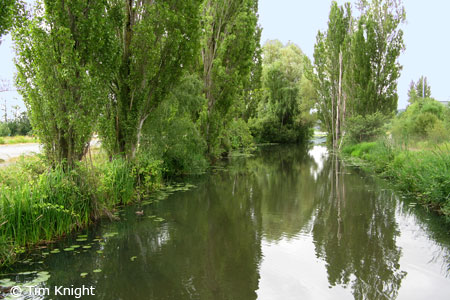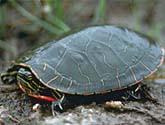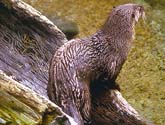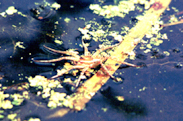
Home |
About Us |
How to Participate |
Biodiversity Modules |
Projects |
Maps |
News |
Resources

Home |
About Us |
How to Participate |
Biodiversity Modules |
Projects |
Maps |
News |
Resources
|
Definition of "Wetlands" - General Code 500: Vegetated areas where plants are rooted in water or water saturated soil or that regularly tolerate flooding for extensive time periods. |
Wetlands: Stream with deciduous trees (533)
 | Descriptive Habitat Code: Wetland (5) areas along a river/stream (3) with deciduous trees (3) along its banks. |
 American Black bear Ursus americanus Code: URAM Photo: Natures Pics | Distribution and
Habitat: It is found in mountainous, forested, and wetland habitats Diet: Interesting fact: |
 Canada Goose Branta canadensis Code: BRCA Photo: Natures Pics |
Distribution and Habitat: The most familiar and widespread goose in North America, the Canada Goose can be found in all kinds of water all across the continent, from the tundra to the Gulf Coast. Their habitat preference includes ponds, lakes, rivers, grainfields, fresh and saltwater marshes. Diet: Interesting fact: |
 Dragonfly Photo: KB |
Distribution and Habitat: Found throughout the world. Diet: Interesting fact: |
 Osprey Pandion haliaetus Code: PAHA Photo: RA | Distribution and Habitat: It is found in and around rivers, lakes, ponds and coastal marine areas. Diet: Interesting
fact: |
 Pacific giant salamander Dicamptodon tenebrosus Code: DITE Photo: BL |
Distribution and
Habitat: It is found in moist forests on the rocky shores of mountain lakes and in or near cold streams. Diet: Interesting fact: |
 Painted turtle Chrysemys picta Code: CHPI Photo: WDFW |
Distribution and Habitat: It is found in wetlands, lakes, ponds and rivers. Diet: Interesting
fact: |
 Raccoon Procyon lotor Code: PRLO Photo: KMD |
Distribution and Habitat: It is native throughout most of the United States and southern Canada, but has also been introduced into Europe and Asia. It is a common inhabitant of agricultural and residential areas. Diet:
Interesting fact: |
 Red-winged blackbird Agelaius phoeniceus Code: AGPH Photo: Natures Pics |
Distribution and Habitat: It is found in wetland areas. Diet: Interesting fact: |
 River otter Lutra canadensis Code: LUCA Photo: RA |
Distribution and Habitat: It can be found in coastal marine areas, rivers and lakes. Diet:
Interesting fact: |
 Tailed frog Ascaphus truei Code: ASTR Photo: BL |
Distribution and Habitat: It is generally found in small, cold streams from near sea level to elevations of over 6500 feet. Diet: Interesting
fact: |
 Water spider Photo: KB | Distribution and Habitat: Interesting fact: |
Home |
About Us |
How to Participate |
Biodiversity Modules |
Projects |
Maps |
News |
Resources